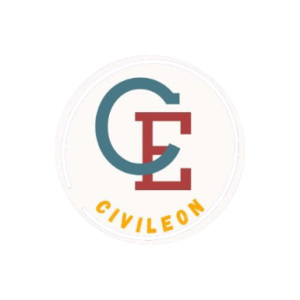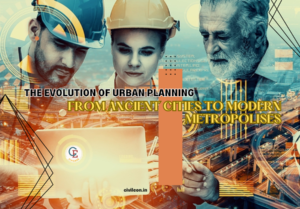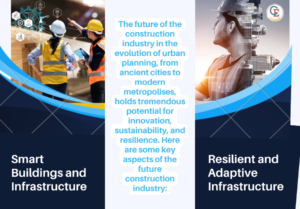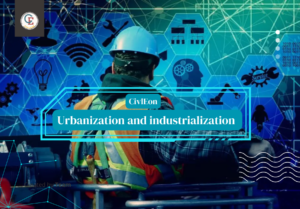Imagine living in a world without cities. No skyscrapers, no busy streets, just wide-open spaces. That’s how it was for our ancient ancestors. But as time passed, people began to gather in groups, and cities were born. This is the story of how those cities evolved, from From Ancient Cities to Modern Metropolises we see today. Urban planning has come a long way from the ancient times when cities were small and simple. As time went on, cities grew bigger and more complex.
Ancient Cities, where It All Began Let’s start at the beginning. Thousands of years ago, some of the earliest civilizations started to form along rivers like the Nile in Egypt and the Tigris and Euphrates in Mesopotamia. These early cities, like Ur and Mohenjo-Daro, were small compared to today’s cities, but they were still impressive. They had streets laid out in neat grids, buildings made of mud bricks, and even plumbing systems to bring water in and take waste out. In the Middle Ages, cities like Paris and Venice were crowded, bustling hubs of culture and trade. Then came the Industrial Revolution, changing everything with factories and machines.
Modern cities like New York and Singapore are huge, with skyscrapers reaching for the sky and advanced technology making life easier. But with big cities come big problems like pollution and traffic jams. That’s why urban planners are working hard to create smarter, more sustainable cities for the future. From Ancient Cities to Modern Metropolises, From ancient mud-brick towns to sleek, futuristic metropolises.
Today, urban planners are working to create smarter, more sustainable cities for the future. Cities like Copenhagen and Singapore are leading the way with green spaces, bike lanes, and public transportation systems that make it easy for people to get around without cars. Meanwhile, cities like Barcelona and Amsterdam are using technology to make their cities more efficient, with sensors that monitor everything from traffic to trash collection.
Major changes in The Evolution of Urban Planning: From Ancient Cities to Modern Metropolises
The evolution of urban planning From Ancient Cities to Modern Metropolises has been characterized by significant changes in several key areas:
Scale and Complexity: Ancient cities were typically small, with populations numbering in the thousands or tens of thousands. They were often centered around religious or political institutions and relied on simple infrastructure such as roads, walls, and rudimentary water supply systems. In contrast, modern metropolises are vast, densely populated urban centers with millions of residents. They feature complex transportation networks, advanced infrastructure, and diverse land uses, including residential, commercial, industrial, and recreational areas.
Planning Principles: Ancient urban planning was often dictated by practical considerations such as defense, agriculture, and trade. Cities were typically built along natural features like rivers or coastlines, and their layouts were influenced by religious or cultural beliefs. In contrast, modern urban planning incorporates a broader range of considerations, including social equity, environmental sustainability, and economic development. Planners use principles of zoning, land use regulation, and transportation planning to shape the physical and social fabric of cities in accordance with contemporary needs and values.
Transportation and Mobility: Ancient cities relied primarily on walking and animal transport for mobility, with narrow streets and alleys designed for pedestrian traffic. As cities grew larger and more populous, transportation systems became increasingly important for connecting people and goods. Modern metropolises feature extensive networks of roads, highways, bridges, and public transit systems, including buses, trains, subways, and light rail. Urban planners must balance the needs of different modes of transportation while addressing issues such as congestion, pollution, and accessibility.
Infrastructure and Services: Ancient cities had limited infrastructure and services compared to modern metropolises. Water supply and sanitation were basic, with reliance on wells, cisterns, and open sewers. Modern cities have sophisticated infrastructure systems for water supply, sewage disposal, electricity, telecommunications, and waste management. Urban planners must design and maintain these systems to meet the needs of growing populations while minimizing environmental impacts and ensuring resilience to natural disasters.
Land Use and Development: Ancient cities often developed organically over time, with little centralized planning or regulation of land use. But modern urban planning involves comprehensive land use planning and development controls to guide growth and development in a coordinated manner.
Environmental Sustainability: Ancient cities were often built without consideration for environmental sustainability, leading to issues such as deforestation, soil erosion, and water pollution. In modern metropolises, there is growing recognition of the need to protect natural resources, reduce greenhouse gas emissions, and mitigate the impacts of climate change. Urban planners incorporate principles of sustainable design, green infrastructure, and renewable energy into their planning efforts to create more resilient and environmentally friendly cities.
Overall, the evolution of urban planning from ancient cities to modern metropolises reflects changes in scale, complexity, planning principles, transportation, infrastructure, land use, and environmental sustainability. While ancient cities laid the foundation for urban living, modern metropolises represent the culmination of centuries of innovation and adaptation in response to changing social, economic, and environmental conditions.
Future of construction industry in The Evolution of Urban Planning
The future of the construction industry in the evolution of urban planning, from ancient cities to modern metropolises, holds tremendous potential for innovation, sustainability, and resilience. Here are some key aspects of the future construction industry:
Green and Sustainable Design: Sustainability will be the main focus in future for construction projects, driven by concerns about climate change, resource scarcity, and environmental degradation. Green building practices, such as passive design, energy-efficient technologies, and renewable energy systems, will be standard features in new construction projects.
Advanced Materials and Technologies: Future construction projects will likely rely on advanced materials and technologies that offer improved performance, durability, and sustainability. Materials such as carbon fiber, graphene, and engineered timber will be used to create stronger, lighter, and more eco-friendly structures. Meanwhile, technologies like 3D printing, robotics, and modular construction will revolutionize the way buildings are designed and built, allowing for greater efficiency, precision, and customization.
Off-Site Construction and Prefabrication: Off-site construction and prefabrication techniques will become more prevalent in the future, allowing for faster, more cost-effective, and less disruptive construction processes. Prefabricated building components, modular units, and off-site assembly methods will reduce construction timelines, minimize waste, and improve quality control. This approach will also enable greater flexibility and scalability in responding to changing urban demands and evolving construction technologies.
Smart Buildings and Infrastructure: The future of construction will be characterized by the integration of smart technologies into buildings and infrastructure. Smart sensors, IoT (Internet of Things) devices, and data analytics will enable buildings to adapt to changing environmental conditions, optimize energy usage, and enhance occupant comfort and safety.
Resilient and Adaptive Infrastructure: As cities face increasing threats from climate change, natural disasters, and other hazards, future construction projects will prioritize resilience and adaptability. Buildings and infrastructure will be designed to withstand extreme weather events, sea-level rise, and other climate-related risks.
Collaborative and Integrated Planning: Future construction projects will involve greater collaboration and integration among stakeholders, including architects, engineers, planners, developers, and community members. Community engagement and participatory planning approaches will ensure that construction projects meet the needs and priorities of local residents and stakeholders.
Mixed-Use and Transit-Oriented Development: Future construction projects will prioritize mixed-use and transit-oriented development (TOD) to create vibrant, walkable, and interconnected urban neighborhoods. Mixed-use developments will integrate residential, commercial, and recreational spaces within close proximity, reducing the need for long commutes and promoting a sense of community.
Global Collaboration and Knowledge Sharing: The future of the construction industry will involve greater global collaboration and knowledge sharing among cities, governments, industry stakeholders, and research institutions. International partnerships, collaborative networks, and knowledge exchange platforms will facilitate the sharing of best practices, lessons learned, and innovative solutions for urban challenges.
Overall, the future of the construction industry in the evolution of urban planning holds exciting possibilities for creating more sustainable, resilient, and livable cities.
NEED OF URBANISATION
Overcrowding and Density: As cities grew larger From Ancient Cities to Modern Metropolises more populous, overcrowding and high population density became significant challenges. Ancient cities often faced cramped living conditions and inadequate infrastructure to support growing populations. In modern metropolises, overcrowding can lead to issues such as traffic congestion, housing shortages, and strain on public services.
Infrastructure and Services: Ancient cities often lacked sufficient infrastructure and basic services, such as clean water, sanitation, and healthcare. In modern metropolises, the challenge lies in maintaining and expanding complex infrastructure systems to meet the needs of growing populations. Issues such as aging infrastructure, inadequate public transportation, and unequal access to services can pose significant challenges for urban planners.
Environmental Degradation: Urbanization and industrialization have contributed to environmental degradation in both ancient cities and modern metropolises. Deforestation, air and water pollution, soil erosion, and loss of biodiversity are among the environmental challenges faced by urban areas. Addressing these issues requires sustainable urban planning practices that prioritize environmental protection and conservation. That’s why urban planners are working hard to create smart cities From Ancient Cities to Modern Metropolises
Feel free to follow us there on Instagram and drop a comment to say hello!



